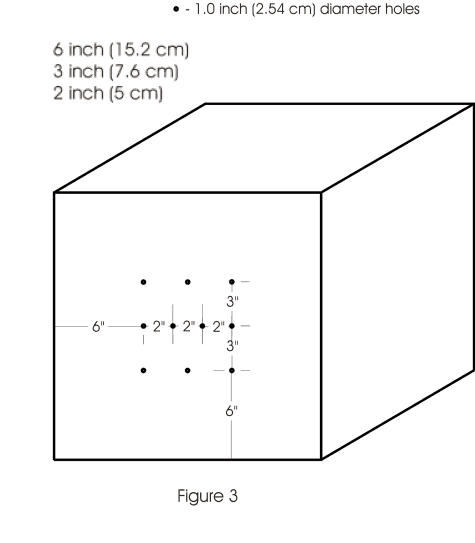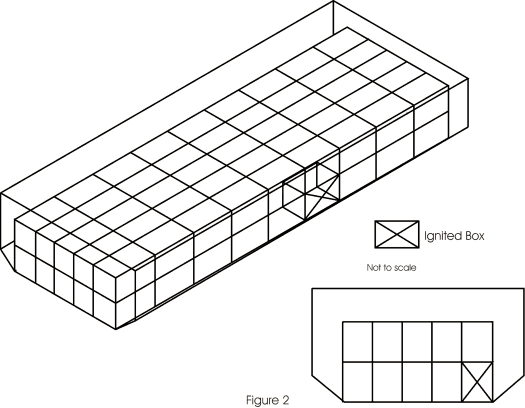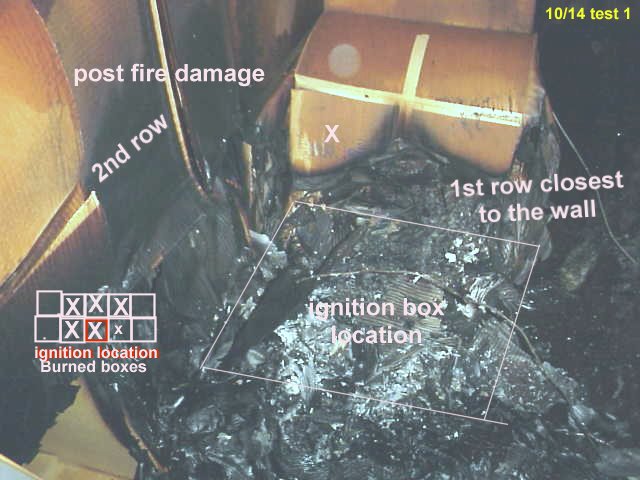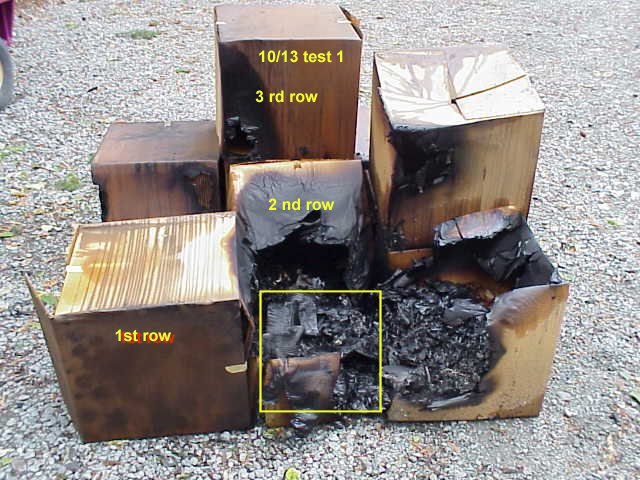
FAA orders airlines to install new fuel tank inerting system to reduce chance of explosion
Low Pressure Dual Fluid water mist and Hypoxic Air Suppression test
| IAI Faa Halon Replacement Agent MPS
test Bulkhead test
fires are located inside this device, Minimum Performance Standard for Aircraft Cargo Compartment Halon Replacement Fire Suppression Systems
|
|
||||
 |
FAA
MPS Starter Box. Filled with 1 Kg of shredded news paper, this standard
flame source produces a fire that will
raise the cargo compartment to above 200 Deg F in under 2
minutes. In this test the
power to the NiCrome wire is applied, after the device temperature
exceeds 200F the cycle starts. After one minute the water mist is
started and data collected for 30 minutes Like "watching paint
dry" the test article fills with smoke, The fire is extinguished then
atmosphere
is cleansed by the constant Hypoxic airflow and after 20 minutes and it
just sits there.
|
||||

|
Cargo
Compartment simulator used for the test. The starter box is
placed in the center of the volume. The atmosphere is normal and at sea
level. The
compartment is filled with cardboard boxed IAW the MPS test method. The
power is then applied. This is the first true affordable "Gate to
Gate" suppression system developed for commercial airliners. |
||||
 |
First bulk
load test. Post test photo, here the ignition box position is outlined and the damage to the rest of the fuel load is noted on the photo |
||||
 |
Second
bulk load. Re constructed outside the container, for a better photograph. The limited damage is evident. In all the bulk load fires the flame never migrated into the third row of boxed. |
||||
  |
This
test series, is one of the hardest to suppress, and is
typical of the suppression efficiency of the Low Pressure Dual Fluid
water mist and Hypoxic
air. With water to control heat, the flame
was suppressed by the Hypoxic atmosphere eventually attaining
extinguishment levels, but with oxygen concentrations high enough to
sustain mammalian life forms. Reduced flammability of airliners is our
goal, At the Fire lab we are getting that done.
|
||||
Home
US EPA, SNAP, ISO, ICAO, FAA US DOT, NFPA, SAE, FM, NIST, ATA, UL, SSL, AS/NZS, ODP , GWP , Pyrogen , PYROGEN , Airline Cargo conversions , Class A fire , Class B fire , Class C fire , EMAA, Encapsulated Micron Aerosol Agent, FAR 25. Aircraft Cargo Fires, Telecommunications fires , Transportation fires , Petrol chemical fires , Fire detection, Automobile Fire , Truck fires , Train fires , Building fires , Structural fires , petroleum fires , engine fires , marine fires , cargo fires , wood fires , Halon flooding , UL 1058, aircraft fire protection , aircraft crash , airline cargo fire , airline fire protection , FAA Technical center , Oil rig fires , gas rig fires , vehicle fires , electrical fire suppression , computer room fires , ship fires , machinery fires , merchant vessel fires , train fires , generator fires , battery fires , Wheel fires , brake fires , tire fires , car fires , home fires , Loss productivity , boeing fire test , 737 fire test , NRL , Naval Research Laboratory , Naval air systems command , NASC , NAVAIR , AS/NZS 4487:1997 , Joint strike fighter , JSF, HARC , NTSB , Transport canada , NIST , FAA Technical Center , Thermal Acoustic Insulation Blankets , IMO , International Maritime commission , USCG , United states coast guard , MCA , Pyrogen Ltd. Pyrogen Corp. Sdn. Bhd. , IAFC , IFPA ,